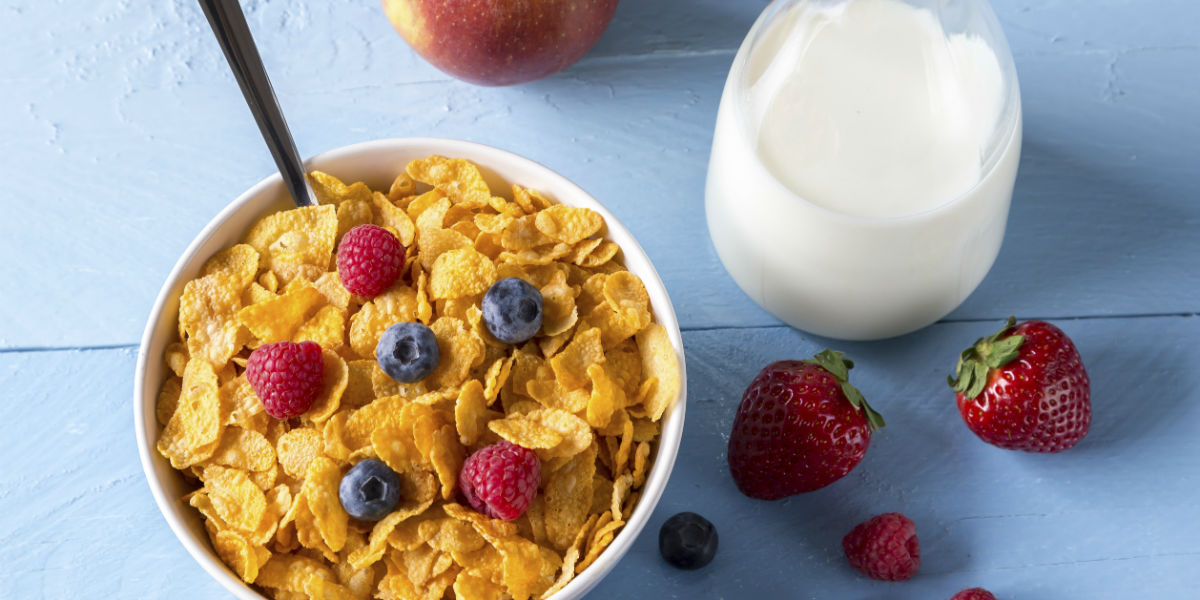It’s no secret that my favorite foods rarely have labels. Whenever possible I recommend starting with raw ingredients from the produce aisle, fish counter and butcher, and building your meal from scratch. Seasonal ingredients from your local farmers market are better still, and tastier to boot.
But I’m also aware that we don’t live in a perfect world, and sometimes we find ourselves in circumstances that aren’t particularly conducive to healthy eating. Eventually most of us will end up staring blankly at the back of a plastic container or cardboard box, wondering what evils will descend upon us if we choose this packaged morsel over another.
Food labels have become stupidly complicated, not to mention misleading. Instant oatmeal mixes have “30% more protein” (huh?). Several brands of granola and crackers at my favorite health food store include “love” on their ingredient list (how is this legal?). Products without any animal-based ingredients proudly showcase that they’re “cholesterol free,” as if it were possible for plants to produce cholesterol (or dietary cholesterol even had a measurable impact on your health). And sometimes it seems like every processed food under the sun has the American Heart Association’s stamp of approval (thanks guys, real helpful.).
Don’t kid yourself, these labels are not about health. They’re about selling more food at higher prices. The data consistently show that people (that includes you and me) are willing to pay more for a product if we think it has a special health benefit. Unless the system changes, expect to be bombarded with misleading food labels for the rest of time.
Fortunately, navigating the insanity is fairly simple.
Do your best to ignore all the front of package health claims assuring you that this high-fiber, low-cholesterol, antioxidant rich product will improve every aspect of your life. Instead flip to the back and look for the one thing that will really tell you how healthy it is, or isn’t: the ingredients.
Real food is made from real ingredients, things you should recognize. Real food is not made with unpronounceable chemicals, dough conditioners, preservatives, or 14 different kinds of sugar. Why does Wonder Bread contain Datem and/or Azodicarbonamide? Because its manufacturers want it to have a shelf life that extends beyond the apocalypse. That way when the zombies run out of brains to eat they can still buy Wonder Bread.
Bizarre chemicals are a telltale sign of preservatives and other ingredients that are added to enhance a food’s sell-ability, not it’s healthfulness. Fake food doesn’t breakdown or go bad because the microorganisms that cause decay cannot thrive on it. It doesn’t support life, theirs or yours. Adding synthetic vitamins does not negate this flaw.
To avoid the traps of food marketers, you have to call their bluff and turn straight to the ingredients. The best packaged foods are more convenient versions of things you could make yourself. Simple foods like trail mix, dehydrated vegetables and fruits, jarred or canned vegetables, frozen fruits and vegetables, and perishable dips like salsa and hummus are at the top of my list of healthy packaged foods, so long as I recognize the majority of the ingredients listed.
You can tell almost everything you need to know about a packaged food by looking at the ingredients. Foods are made from other foods, food-like products are made from synthetic stuff in a lab. The best choices lean more toward real than fake.
The only caveat I’d add is that food manufacturers are not stupid, and many have realized that people distrust foods that contain high-fructose corn syrup (HFCS). As a result some of them have replaced this cheap, uber sweet source of sugar with other forms that appear better because they sound natural. Alarms should go off in your head when you see anything that sounds like a sweetener, even if it’s made from fruit or grains.
If it’s impossible to find a version of what you want without added sugar, just try to get the one with as little as possible. Ingredients are listed in order from largest amount (first ingredient) to smallest amount (last ingredient), so if any of the first three to five ingredients are sweeteners you should be suspicious. At this point you can glance at the sugar content and serving size data to see how much sugar you would actually be eating. I try to keep non-dessert foods under 10 grams of sugar per serving (preferably under 5 grams), and anything over 15 grams I consider to be dessert even if it’s a savory food.
There are a handful of decent food companies that go out of their way to make real food from real stuff. But they aren’t easy to find, and the front of package labels and health claims are little help. I dream of the day when ingredient lists are the only information that is allowed on the front of a package. Until then it’s up to us to ignore the health claims and search the package to see what it’s actually made of.
This post originally appeared on Darya Rose’s website, Summer Tomato.






























